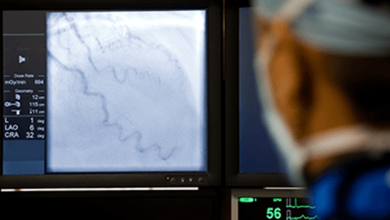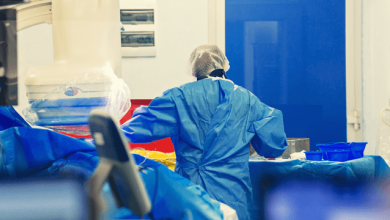Search results
Author(s):
Thijmen W Hokken
,
Joana M Ribeiro
,
Peter P De Jaegere
,
et al
Added:
3 years ago
Evidence-based medicine is the foundation of contemporary clinical practice and results in better clinical outcomes than experience-based medicine.1 Meta-analyses of homogenous randomised controlled clinical trials are the pinnacle of evidence-based medicine and the backbone of the highest recommendations in clinical guidelines.
These randomised trials pertain only to the selected patients who…
View more
Author(s):
Xiao-Fei Gao
,
Xiang-Quan Kong
,
Guang-Feng Zuo
,
et al
Added:
3 years ago
Coronary angiography is widely used to diagnose coronary artery disease and to guide percutaneous coronary intervention (PCI). However, 2D projection angiography cannot completely reflect the 3D coronary lumen, with several inherent limitations in evaluating plaque composition, vessel diameter, diffuse reference vessel disease, lesion severity, as well as the result of stent deployment. In the…
View more
Author(s):
Jonathan A Mailey
,
Patrick Thompson
,
Paul W Johnston
,
et al
Added:
1 year ago
Author(s):
Jakub Podolec
,
Lukasz Niewiara
Added:
3 years ago
Atherosclerosis is the primary cause of coronary artery disease morbidity and mortality worldwide.1 Low-density lipoprotein cholesterol (LDL-C)- lowering therapies have already become one of the most important in the prevention of atherosclerosis complications.2 Evolocumab is a human monoclonal antibody that inhibits proprotein convertase subtilisin/kexin type 9 (PCSK9) and thus significantly…
View more
Author(s):
Saad Tariq
,
Muhammad Usman Mustafa
Added:
3 years ago
Spontaneous coronary artery dissection (SCAD) is a rare and potentially life-threatening condition that can cause rapid deterioration and fatal myocardial infarction. By definition, SCAD implies formation of a false lumen around the true lumen of the artery, which may or may not communicate with the true lumen. By compression of the true lumen, this may cause a blockage of the coronary flow,…
View more
Author(s):
Joel A Garcia
Added:
3 years ago
Introduction
Angiography has long been considered the gold standard in guiding coronary interventional therapies. However, well-documented limitations of angiography necessitate the use of more advanced imaging and functional hemodynamic evaluation to arrive at optimal decisions regarding revascularization.1 Contemporary guideline-driven practice dictates revascularization only for ischemia…
View more
Author(s):
Arditya Damarkusuma
,
Paula Mota
,
Billal Patel
,
et al
Added:
1 month ago
Author(s):
Nienke S van Ditzhuijzen
,
Jurgen M Ligthart
,
Nico Bruining
,
et al
Added:
3 years ago
The indications for percutaneous coronary intervention (PCI) have expanded steadily during the past years. After the days of the revascularisation of obstructive coronary artery disease (CAD) by balloon angioplasty,1 the introduction of coronary stents has essentially contributed to PCI being one of the most frequently performed invasive therapeutic procedures worldwide. Bare metal stents (BMS)…
View more
Author(s):
Adam P Vasconcellos
,
Kenneth S Korr
Added:
3 years ago
Segment elevation myocardial infarction (STEMI) and other acute coronary syndromes occur most commonly as a consequence of plaque rupture within a coronary artery. By contrast, coronary embolization is often perceived as an exceedingly rare cause of acute coronary events but has been reported in the setting of endocarditis, prosthetic valve thrombus, following cardiac surgery, and after invasive…
View more












 « First
« First